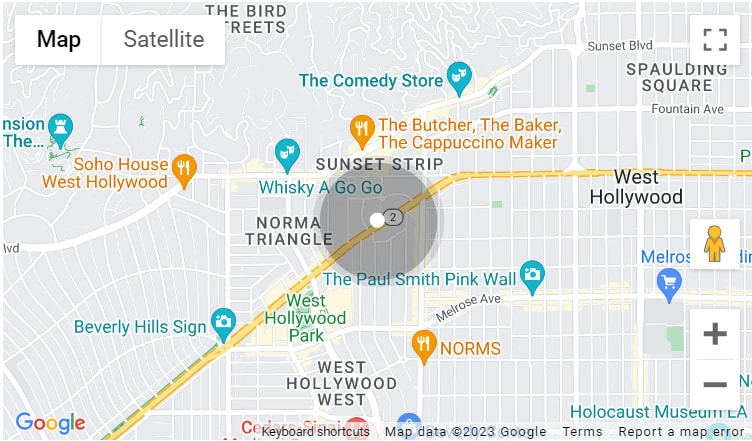When embarking on the journey of purchasing a new home, one of the most critical steps in the process is the home inspection. This comprehensive examination of a property is designed to provide potential buyers with valuable insights into the condition of the house. As a real estate agent committed to ensuring a seamless home-buying experience, it's essential to shed light on the key components of a comprehensive home inspection. In today's market, we require sellers to provide a complete home inspection as part of the disclosure package, making it crucial for buyers to understand what to expect.
The Significance of Home Inspection Before Buying
Before delving into the specifics of a home inspection, it's important to highlight the significance of this crucial step in the home-buying process. A home inspection serves as a safeguard, offering buyers a comprehensive assessment of the property's condition. It helps potential homeowners make informed decisions and avoid costly surprises down the road.
Exterior Evaluation
A thorough home inspection should always begin with a comprehensive evaluation of the property's exterior. This step involves assessing various components and features that can impact the overall condition and safety of the home.
-
Roofing: The condition of the roof is a fundamental aspect of any home inspection. Inspectors will assess the roof's age, materials, and integrity. Signs of damage, such as missing shingles or leaks, are critical findings that buyers need to be aware of.
-
Siding and Exterior Finishes: The inspector will closely examine the siding, brickwork, stucco, or other exterior finishes. Any cracks, rot, or damage will be noted, as these can affect the structural integrity and energy efficiency of the home.
-
Windows and Doors: The condition of windows and doors is crucial for both safety and energy efficiency. Inspectors will check for proper sealing, functioning locks, and any signs of damage or decay.
-
Foundation and Structure: The foundation is the backbone of the home. Any issues with the foundation can lead to significant structural problems. A comprehensive inspection will include a thorough assessment of the foundation and structural components.
-
Driveways and Walkways: While less critical than other components, driveways and walkways can still impact the overall safety and aesthetics of the property. Cracks, sinking, or uneven surfaces will be noted.
Interior Examination
After completing the exterior evaluation, the home inspection process shifts indoors. Here, inspectors meticulously examine various interior components, ensuring that the home is not only safe but also comfortable for the occupants.
-
Electrical Systems: The electrical system is a crucial part of any home. Inspectors will assess the wiring, outlets, circuit breaker panels, and the overall safety of the electrical setup. Any outdated or unsafe wiring will be highlighted.
-
Plumbing: A functioning plumbing system is essential for everyday life. Inspectors will check for leaks, water pressure, drainage, and the condition of pipes and fixtures. Identifying plumbing issues early can prevent costly repairs.
-
Heating, Ventilation, and Air Conditioning (HVAC): The HVAC system plays a pivotal role in maintaining indoor comfort. Inspectors will evaluate the furnace, air conditioner, ductwork, and thermostat to ensure they are in good working order.
-
Appliances: Major appliances like the stove, refrigerator, dishwasher, and washer/dryer may be included in the inspection. The inspector will ensure these appliances are functional and in good condition.
-
Structural Components: The interior inspection also involves assessing the home's structural elements, including walls, ceilings, and floors. Signs of water damage, mold, or structural issues will be reported.
Attic and Crawlspace Evaluation
The attic and crawlspace are often overlooked areas, but they can reveal important information about the condition of a home.
-
Attic: The attic inspection includes checking for proper insulation, ventilation, and signs of leaks or pests. An inadequately insulated attic can lead to energy inefficiency.
-
Crawlspace: In homes with crawlspaces, inspectors will examine the condition of the foundation supports, insulation, and any signs of moisture or structural issues.
Environmental Factors
Home inspections should also address potential environmental concerns that could affect the health and safety of the occupants.
-
Radon Testing: In regions with a known radon risk, inspectors may perform radon testing to assess whether the gas is present at dangerous levels.
-
Mold and Mildew: Inspectors may look for signs of mold or mildew, especially in areas prone to moisture buildup. Mold can pose health risks and may require remediation.
-
Pest Infestations: The presence of pests, such as termites or rodents, can be a significant concern. Inspectors will look for signs of infestations and damage caused by pests.
Documented Findings
A thorough home inspection results in a detailed report that documents all findings. This report is a valuable resource for buyers, allowing them to understand the condition of the property and make informed decisions.
-
Summary of Findings: The report typically begins with a summary of the most important findings. This provides buyers with a quick overview of any significant issues.
-
Detailed Descriptions: Each component of the inspection is documented with detailed descriptions, including any defects or deficiencies found.
-
Photographic Evidence: To provide visual clarity, photographs are often included in the report. These images help buyers understand the extent of any issues.
-
Recommendations: Inspectors may offer recommendations for repairs or further evaluations by specialists if specific concerns arise during the inspection.
-
Safety Hazards: Any safety hazards or immediate concerns that could impact the well-being of the occupants are highlighted.
Making Informed Decisions
Understanding the components covered in a home inspection is essential for buyers. Armed with this knowledge, they can make informed decisions about whether to proceed with the purchase, negotiate repairs with the seller, or walk away from a property that may have significant issues.
In today's real estate market, where sellers often provide a complete home inspection as part of the disclosure package, buyers have the advantage of access to crucial information upfront. This transparency promotes a fair and smooth transaction process. However, buyers should still consider having their own independent inspection to ensure that their interests are fully protected.
In conclusion, a comprehensive home inspection is a vital step in the home-buying process. It encompasses a thorough assessment of the property's exterior, interior, attic, crawlspace, and potential environmental factors. The findings are meticulously documented in a report that serves as a valuable resource for buyers. With a clear understanding of the key components covered in a home inspection, buyers can confidently navigate the real estate market, making informed decisions that align with their needs and expectations. Remember, in today's market, transparency and knowledge are your greatest allies in finding your dream home.
In today's real estate market, where sellers often provide a complete home inspection as part of the disclosure package, buyers have the advantage of access to crucial information upfront. This transparency promotes a fair and smooth transaction process. However, buyers should still consider having their own independent inspection to ensure that their interests are fully protected.
In conclusion, a comprehensive home inspection is a vital step in the home-buying process. It encompasses a thorough assessment of the property's exterior, interior, attic, crawlspace, and potential environmental factors. The findings are meticulously documented in a report that serves as a valuable resource for buyers. With a clear understanding of the key components covered in a home inspection, buyers can confidently navigate the real estate market, making informed decisions that align with their needs and expectations. Remember, in today's market, transparency and knowledge are your greatest allies in finding your dream home.
About Marc Hayden Bryman
Since beginning his real estate journey in New York City in 1998, Marc has garnered immense expertise, deeply cherishing his family in Menlo Park, actively serving his community, celebrating his wife's artistic gifts, and brilliantly navigating the Bay Area's real estate landscape as part of the elite Compass Menlo Park team. If you are looking to buy or sell a home, invest in a commercial property, are considering a potential development project, or have any questions regarding the Silicon Valley real estate market, contact Marc Hayden Bryman today.



